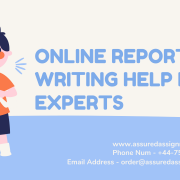Executive summary:
The report deals with the significance of using cloud computing in an organization. The report deals with the changes that would take place in the operations of the business of a global company. The implications that the company would have on the handling of data and information systems of the company are discussed. The appropriateness and suitability of the cloud computing architecture model according to the requirements of the company are illustrated in the report. The issues that are associated with the cloud computing application in the data information system of the company are evaluated in the report the evaluation of the business requirements to determine the suitability of a cloud computing delivery model is presented. The plan regarding the governance and security requirements for a cloud computing delivery plan is interpreted.
Introduction:
Clouds have been emerging as the infrastructure of computing that is enabling the very fast delivery of resources of computing as a utility in an environment that is scalable dynamically and virtually. The benefits of using cloud computing over conventional computing include lower entry costs, independence of the device, agility, scalability, and independence of location. cloud computing is a new approach to the infrastructure of Information Technology along with a logical initiative towards a path that is more effective and efficient for the use of computing resources (Avram, 2014).
The business organization can transform its models of business to gain a competitive edge by adopting the technology of cloud computing at the initial stage of business. The Board of SoftArc Engineering Ltd had approached for incorporating a cloud computing that would be suitable for the organizational and operation model of the company.
Cloud architectures that should be employed to assist SoftArc Engineering
The cloud computing model that SoftArc Engineering should employ in its system is the Infrastructure as a Service that abstracts the server, network, and storage infrastructure which is the overall hardware into the computing pool, connectivity, and storage capabilities that would be delivered as service for the metered costs which would be based on the usage by the company (Calheiros, et al., 2014). The company’s goal to obtain a standardized virtualized and flexible environment of operation would be achieved which will also facilitate the foundation for the company to incorporate to incorporate PaaS and SaaS if the company finds it necessary.
The specific architecture that SoftArch engineering should consider deploying is the architecture named Reservoir due to the lack of incompatibility. This would create a federation of multiple providers of cloud that would act as a wide fabric of resources and would guarantee the company regarding the flexibility and other operational needs (Di Spaltro, Polvi & Welliver, 2016). The Reservoir architecture would be employed for the computational resources that are within the site that are partitioned by different layers of visualization into the environment of virtual execution that is required for the new installation setup of the company.
The benefits and issues
The benefits of using this cloud computing architecture in the data information system are:
Reduction of costs and increase in efficiency:
The low challenges for the entry and the model of pay-per-usage that is offered by cloud computing provide versatility to the company’s data information system. It also provides scalability for the company and is also affordable which fulfills the requirements of the company to keep the installation process cost-effective (Erl, Cope & Naserpour, 2015).
Reliability:
There is more reliability as compared to the in-house information system of the company due to the economics of scale. The vendors provide 24/7 support regarding the technology and highly trained and experienced staff are there to support the information infrastructure which would benefit the company.
Security gains:
The cloud provider would provide the knowledge and hardware regarding the latest measures of security.
The risks associated with the cloud computing architecture are:
Dependency on the network:
The cloud computing model is dependent on the availability of the internet. Thus, the system is prone to interruptions in service at any given working time or in the middle of any transaction or task (Hashizume, et al., 2013).
The creation of a hybrid system is difficult when making the data information system compatible with the new cloud structure.
Risks that are associated with Hybrid Cloud Strategy:
| Risks | Management of risks |
| Governance loss | It can be managed by asking the cloud provider for evidence of their compliance with the relevant requirements. The cloud provider should be asked to provide permission regarding the audit by the customer of the cloud. |
| Compromise of management interface | The customer management of the cloud provider should be restricted from public access and mediating access to the wider scale of resources must be restricted excluding the conventional hosting providers which would result in reducing these risks. |
| Failure of isolation | The multi-tenacity and sharing of resources must be restricted by enhancing the isolation of the cloud architecture. |
| Data protection | The data of the company should be secured and embedded with the cyber laws. Multiple transfers of data need to be on surveillance along with the provision of certification on their processing of data and the security activities to have better control over the flow of data. |
Measure taken for Security
The measures that can be incorporated to ensure the security of information regarding the computing strategy of a hybrid cloud of the company are much-needed requirements for the company. The execution of very efficient regulation using a detailed interpretation of the estimation of risk and compliance processes is a suitable measure that has to be taken for improving the security of information of the hybrid cloud strategy of SoftArc Engineering (Lian, Yen & Wang, 2014).
The privacy policies enforcement regarding the frameworks of cloud computing has to be executed for data security. The management of human resources and the entities on the platform of cloud computing can be considered as a viable guidance of information security. This dimension of information security is required to be evaluated regularly to obtain knowledge regarding the probable areas where the infrastructure of the cloud would pose a threat to the privileges of information security.
Transition of the application
The transition of the application of cloud computing in the cloud environment of private or public organizations could be regarded as an opportunity through which the accomplishment of required outcomes like cost reduction, application variability, and improvement in the operations along with the feasibility of the infrastructures of the cloud computing structure (Moreno-Vozmediano, Montero & Llorente, 2013).
The outcomes of the resilience of the application could be identified from the surveillance of the architectures that relate to effective practices of cloud computing along with the requirement of minimum alterations to improve the application’s resiliency.
The resiliency of the application in the activities is observed in the planning, execution, and design of the application of the cloud (Oliveira, Thomas & Espadanal, 2014). The analysis of the resiliency applications along with the compatibility regarding the principles of cloud architecture could allow the company to materialize on the future aspects of the company’s economies of the cloud and efficiencies.
Data loss is an important issue for the infrastructure of cloud computing, therefore, the need for backup and techniques of data recovery has been observed regarding the BCP of the civil engineering company, SoftArc Engineering. Seed Block Algorithm architecture, Linux Box, Parity Cloud Service, Hot/Cold Backup Strategy, Efficient routing Grounding on Taxonomy (ERGOT), and HSDRT are some of the data recovery and backup tools that can be used by the company (Rahimi, et al., 2014).
These resources are related to the advantages that include the low cost, privacy, execution in the failure detection simple implementation, retrieval of exact match, and reliability that can facilitate in providing insights into the Hybrid cloud environment’ efficiency.
Requirements of SoftArc Engineering
The requirements that are needed for the administration of remote servers, management of agreement at the service level, and implications of resource management regarding the delivery models of cloud service can be understood from the checklists. These checklists can be referred to as the basic references to the primary functions and the operations of the enterprise that facilitate the estimation of the current features and the expected features in the cloud computing system.
The implications of resource management are very much reflective regarding the requirements of metadata and instances that relate to the service required. The strategy of resource tagging applies to the identification of plausible routes to track and follow resources (Rahimi, et al., 2014).
The other formidable requirement is the management of the resources that are used regarding the resource integration of the organizational frameworks of internal resource management. the requirements regarding the administration of remote servers could be identified in the shape of capabilities of the cloud system to regulate the images of the server, control, and instrumentation of the credentials of the operating system, and the management of the alterations in the baselines of operating system hardening., firewall, and observing of the unauthorized changes and intrusive attacks. The management requirement of the SLA which can be incorporated in the BCP of SoftArc Engineering denotes the SLA review.
Migration Steps
The steps that can be incorporated for the SharePoint instance migration and the migration of the SQL Server 2012 Database servers to the AWS cloud can be described s in the following way. The initial step denotes the creation of an account of AWS for the organization which is exclusive of any charges. The consecutive step would include the network and Active Directory stack launch by using customers’ AMI and facilitating the tier of the database.
The next step would be the launch of the application stacks by the use of custom AMI along with the implementation of Windows Server 2008 R2 EC2 which is associated with the SharePoint Server installation (Toosi, Calheiros & Buyya, 2014). The next step would be a reflection of the utilization of the BYOL which is the license key, test installation, or the trial PD key. The configuration and deployment of the Elastic Load Balancer can be utilized to sort out the traffic among the WFE server. The last step is regarding the SharePoint farm configuration to obtain a demonstration proof.
Critical Issues
The critical issues that have the probability to arise in the process of migration can be understood from the individual steps. The database stack launch could be related to the data redundancy implications that could affect the database tier provisioning. The app stack launch could become a matter of various issues that lead to the compatibility of the trial PD key and License key (Yang & Jia, 2013).
Consecutively, the crucial issue with the process of migrations recognized in the web stack launch which implies the indications regarding the utilization of 2Web Front End servers which could be related to the documentation concerns of IDS and inputs into the templates like Domain Member Security Group ID, Server Subnet IDs, and VPS ID.
References
Avram, M. G. (2014). Advantages and challenges of adopting cloud computing from an enterprise perspective. Procedia Technology, 12, 529-534.
Calheiros, R. N., Ranjan, R., De Rose, C. A., & Buyya, R. (2014). CloudSim: A Novel Framework for Modeling and Simulation of Cloud Computing Infrastructures and Services [EB/OL].
Di Spaltro, D., Polvi, A., & Welliver, L. (2016). U.S. Patent No. 9,501,329. Washington, DC: U.S. Patent and Trademark Office.
Erl, T., Cope, R., & Naserpour, A. (2015). Cloud computing design patterns. Prentice Hall Press.
Hashizume, K., Rosado, D. G., Fernández-Medina, E., & Fernandez, E. B. (2013). An analysis of security issues for cloud computing. Journal of Internet Services and Applications, 4(1), 5.
Lian, J. W., Yen, D. C., & Wang, Y. T. (2014). An exploratory study to understand the critical factors affecting the decision to adopt cloud computing in Taiwan hospitals. International Journal of Information Management, 34(1), 28-36.
Moreno-Vozmediano, R., Montero, R. S., & Llorente, I. M. (2013). Key challenges in cloud computing: Enabling the future Internet of services. IEEE Internet Computing, 17(4), 18-25.
Oliveira, T., Thomas, M., & Espadanal, M. (2014). Assessing the determinants of cloud computing adoption: An analysis of the manufacturing and services sectors. Information & Management, 51(5), 497-510.
Rahimi, M. R., Ren, J., Liu, C. H., Vasilakos, A. V., & Venkatasubramanian, N. (2014). Mobile cloud computing: A survey, state of art and future directions. Mobile Networks and Applications, 19(2), 133-143.
Rong, C., Nguyen, S. T., & Jaatun, M. G. (2013). Beyond lightning: A survey on security challenges in cloud computing. Computers & Electrical Engineering, 39(1), 47-54.
Toosi, A. N., Calheiros, R. N., & Buyya, R. (2014). Interconnected cloud computing environments: Challenges, taxonomy, and survey. ACM Computing Surveys (CSUR), 47(1), 7.
Yang, K., & Jia, X. (2013). An efficient and secure dynamic auditing protocol for data storage in cloud computing. IEEE transactions on parallel and distributed systems, 24(9), 1717-1726.











